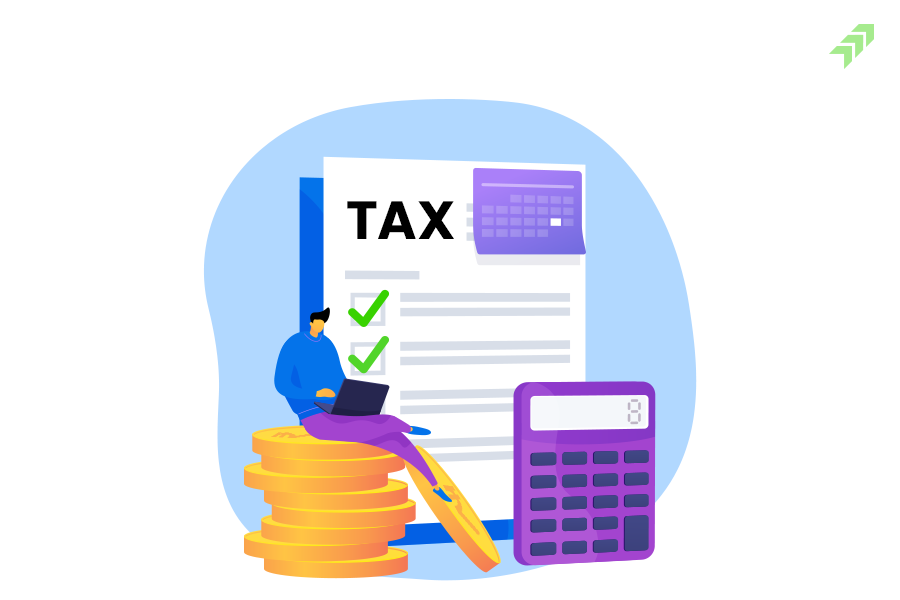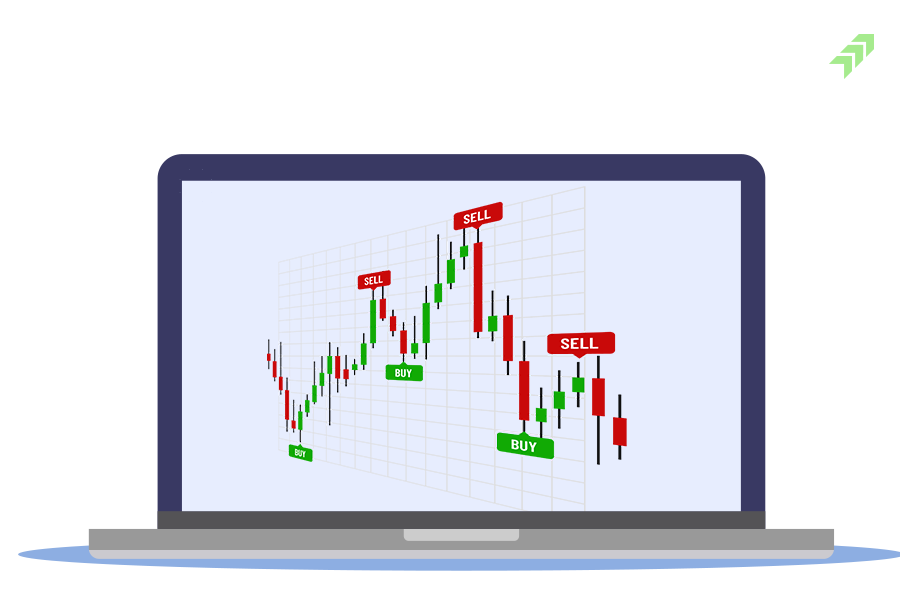Trading in the stock market without using any safety net is just like commuting in traffic without a helmet. Surely it is very risky, and if adverse events occur, it would be a great loss. The fact is that every participant in the stock market shares some basic intention of generating returns. However, there is no assurance or guarantee that you will surely earn profit, and there is also the possibility that you will incur huge losses if the financial market or a particular stock does not move in the direction that you anticipate it would. As a result, you should try to minimize your losses here.
At the time of placing orders or creating a trading position in the stock market, especially in day trading or short-term trading, you need to use certain techniques so that you can limit losses. “Stop Loss (SL) is the kind of safety net you can use to limit your losses. Accordingly, in this article, we are discussing stop loss, what the role, its use, is and how to perfectly set stop loss and seize returns with a precise approach.
What is Stop Loss in Equity Markets?
Stop-loss is a kind of risk instrument that is used to bind the probable losses of traders or investors in the stock market. When you trade with stop loss, it will work automatically whenever the price reaches or triggers at the stop loss point. It helps to protect investors from further losses, as it acts like a safety net when the market or individual stock price moves beyond your expectations.
In the stock market, people also make decisions highly motivated by their emotions, and sometimes such emotions become the prime reason for financial losses. In such situations, stopping losses helps investors manage their emotions and avoid making decisions that are influenced by their emotions.
You can use stop-loss in both types of trades: long (buy), sell, or short-sell. You just need to choose the right trigger point from where you want to restrict the losses from further increase. Using the stop-loss method, you can avoid huge losses, especially in a highly volatile market.
Also Read: What is Short Covering in Stock Market & How to Identify Rally
How Does Stop Loss Work?
When you use the stop loss or trade with SL, it will work like a trigger point to square off your trade position when the stock price reaches this SL trigger point. It works in both types of trade positions.
The stop-loss mechanism simply works like a trigger point where the share price moves in an opposing direction or against your expectations. This means if you have created a long position and the stock price starts falling past your buying point, then stop-loss will stop your losses beyond the SL point.
Also Read: What is Long Unwinding in Stock Market: Is it Good or Bad?
Similarly, if you have created a short position in the market and the stock price moves in an upward direction, SL will work somewhere at the higher point to limit your losses. However, there are different types of stop loss you can use as per your trading style and trade positions.
Also Read: How to Identify Trend in Stock Market: 10 Points to Find Trend
Types of Stop Loss Orders in Share Market
Though there could be multiple types of stop-loss orders, traders or investors use them as per their applicability and feasibility. But in the most prominent ways, there are mostly two types of stop-loss orders that are mostly and successfully used by the traders in the stock market. First is Fixed Stop Loss Orders and second is Trailing Stop-Loss Orders. These two popular types of stop-loss orders are massively used by traders across the world on all kinds of stock markets.
Fixed Stop Loss Order
As the name suggests, a fixed stop loss order is a type of order where the stop loss price is set at a fixed point, which is below the market price when you have crates in a long position and above the market price when you create short positions. The stop loss is set at fixed levels once it is set by the trader while placing the order and is not changed automatically, even in highly volatile market conditions. When the market index or the stock price reaches this SL level, it executes.
Trailing Stop-Loss Order
It is different from fixed SL, as instead of a fixed point, a certain percentage is used to set the stop loss in the trailing stop loss order. When you use a trailing stop-loss order, it can automatically adjust the SL as per the change in the price of the stock. This means that when the stock price moves in the same direction as you expected, the SL will also move in the same direction. It can lock in your profits but also limit your potential losses in unfavourable market conditions.
How Does a Trailing Stop Loss Work?
The trialling stop loss works along with the change in the price of the security. A certain percentage of stock prices are set as per its volatility, and when the price of the stock moves in an upward or downward direction, the stop-loss point also gets adjusted as per the percentage set. Trailing stop loss allows you to set the maximum value or percentage of loss you could incur.
Trailing stop loss keeps moving when the price of the stock moves in your favour, while it remains at the same place when the stock price moves against you. Trailing stop loss is highly flexible and suitable for volatile markets and stocks with uncertain movements. It helps to reduce emotional decision-making and protects your investment by limiting the potential loss.
Also Read: Why You Should Invest in the Stock Market: Reasons & Benefits
How to Place Stop Loss Orders: Examples
Placing the order with the stop loss is a sensible decision, but you need to decide what type of stop loss you are going to use in your trade. You can choose the fixed stop-loss order or trade with a trailing stop-loss order, depending on the market condition and your risk-bearing capability.
Placing the stop loss is simple; you just need to choose the right point below your baying point in long positions and above the selling point in short-selling. The crucial point is how to decide or choose the right SL point while placing your order with stop loss. This becomes a little more complicated when you choose the fixed type of stop loss, as you need to calculate the right SL point.
Stop Loss Orders Examples:
Placing the orders with different types of stop losses needs a different approach. Both types of stop losses are a little bit different from each other. Hence, to make it better understood, we brought here stop-loss orders with a set of examples for both; just have a look at how to place the SL.
How to Set Fixed Stop Loss Order?
As we have already told you, fixed-price stop-loss orders mean you have to set the stop-loss level at a fixed price somewhere below your buying levels and above any point when you are short-selling the stock. Simply put, you can choose the SL just below 1% to 3% below your buying levels. For example, if you put your buying order to purchase a stock at the price of Rs 600 per share, then you can choose the 2% SL, which would be at Rs 598, and it would be the trigger point that will limit your losses when the stock price does not move as per your expectations or the market condition is volatile.
How to Set a Trailing Stop Loss?
In trailing stop-loss orders, instead of using the fixed price of SL, you have to choose a certain percentage that will keep changing as per the change in the price of the stock. The trailing SL can adjust itself automatically when the market price increases or decreases, giving a hedge against any kind of unexpected movement in the stock price.
For example, while pacing the order of security of Rs 200, if you have set the SL at 10% below the market value, then the stop loss point will be at Rs 180, which means if your stock price falls below this point, it will be triggered. If the stock price moves to Rs 240, then the trailing stop loss will be adjusted to 10% of this new market price. And that will be Rs 216, which means after reaching the peak of Rs 240, if the stock price falls to Rs 216, then the stop loss will be executed. Here you can calculate your profit of RS 16 per share (216–200) on this trade using the right levels of stop loss.
How to Calculate or Set Stop Loss and Take Profit?
Calculating the stop loss is the crucial point that needs skills and knowledge to find out the right SL levels at the time of placing the orders. For intraday trading or short-term trading and future and option trading, you must have the knowledge of technical analysis to analyse the stock price movements and their crucial levels like support and resistance to use them as a stop loss.
Also Read: 7 Biggest Mistakes To Avoid While Doing Intraday Trading
Hence, while calculating the stop loss, you have to consider two aspects: the first is how much loss you are ready to incur, and the second is, from a technical point of view, what would be the best stop loss point that can work as the best turning point for the stock price movement.
Taking the first aspect, if you choose the percentage method to set the stop loss, then it would be the percentage of the stock price. Suppose you place an order for a stock price of Rs 100 and choose a stop loss of 5%. Then the stop loss for this stock will be Rs 95. When the stock price is triggered at this SL point, then the maximum loss you will incur is Rs 5, and the profit could be anything.
In the second case, you can use the technical levels to choose the stop-loss point using the technical factors. Traders mostly use technical analysis to find out the buying, selling, and stop-loss levels while placing their orders in the stock market. And mostly, they choose the stop loss just below the support levels while placing while creating the long position. In the case of selling the stock, the stop loss is taken at the nearest resistance above the buying point.
The best to set a stop loss and take profit is to choose the technical indicators like moving averages such as 200-daymoving averages to choose the stop loss point just above and below in buying and selling positions respectively. Here you can choose the simple moving average or exponential moving average giving the weightage to the current market scenario or equally to the past one.
Also Read: How to Use Moving Averages in Trading & Convergence Divergence
Once you have calculated the stop loss, you can set the stock price the same as per the market conditions. However, in different types of market conditions, the SL method or types of SL could be different, but considering the technical factors, it is very important to use the stop loss effectively.
Also Read: Is Technical Analysis Useful or Useless or Enough for Trading
Otherwise, instead of earning profits, most of the time your SL will trigger and you will incur losses. Though SL would be smaller when many losses accumulate due to improper use of SL, there could be a huge amount of loss, and you can count the end of your trading journey.
How to Use Stop Loss Effectively in Trading?
Using the stop loss effectively is very important to avoid unnecessary triggers in trades that not only reduce your chances of getting profits but also increase your frequency of trades, which will cost you in terms of paying the brokerage on every trade. In the previous paragraph, we have already told you that you can choose either the percentage method to set the stop loss or technical indicators, but while using the stop loss effectively, you need to consider various factors in mind.
Also Read: Top 5 Best Technical Indicators for Intraday or Day Trading
Factors to Consider While Using the Stop Loss Levels:
Understand the Market Conditions: First of all, check the current market condition, whether it is running upwards, downwards, or sideways. If you are looking to trade in any individual stock, keep checking the stock news or industry and sector trends to decide the right levels of stop-loss.
Volatility Index (VIX) of Stock: VIX tells the current volatility levels in the stock or the market index. If the VIX is high, you have to keep your stop loss at wider points, while in a less volatile market, you can keep the stop loss a little bit tighter to avoid the trade being executed prematurely.
Also Read: VIX India: How it Works, Calculated & Used for Share Trading
Liquidity Levels in the Stock: Liquidity in the stock is another factor you have to keep in mind while choosing the SL effectively. In low-volume stocks or if there is not enough liquidity in the stock, you will not easily find the buyer on the other side which will not allow you to exit from the trade.
Also Read: Importance of Volume in Technical Analysis: Use & Role in Trading
Size of your Trade Position: The size of your trade position also matters a lot while entering into the trade, as having a large position in a stock will make it difficult to execute the trade, especially when there is not enough liquidity in the stock. Hence, be careful while deciding the size of the position.
Evaluate the Risk-Reward Ratio: Considering the risk assessment is another factor that you need to consider while determining the stop loss in your trade. You can check the risk-reward ratio and use the right mix of trading strategies to choose the right levels of SL to make your trade profitable.
Choose the Right SL Levels: Finally, while considering all the factors, choosing the right stop-loss point is the most important factor you have to consider. You can choose the percentage method to determine the SL levels as per your risk appetite, and to determine the right SL in a stock as per its VIX and trend in the stock, always use the technical analysis. You can use the support and resistance levels, trend lines, moving averages, and other most popular technical indicators to find the best SL point. The SL should be neither too close nor too far from the entry price to make it effective.
Apart from these factors, the type of trading or segment you are trading and the stop-loss approach keep changing. If you are trading with a short-term to medium-term trading perspective, then SL will be different from intraday trading. Similarly, if you are trading in the future and options or derivatives market, the SL will be different as per your buying or selling strategy in the stock.
Best Stop Loss Strategy for Intraday
Choosing the stop loss for the intraday trading you can use the support resistance levels and various other technical indicators to know the best stop loss levels for the intraday trading. And you can choose the percentage method to calculate the SL levels for the day trading.
Also Read: How to Do Intraday Trading: Best Stocks, Charts & Strategies
Best Stop Loss Percentage for Day Trading
However, there could be any level of stop loss depending on the technical analysis and other factors for choosing the right percentage of stop loss for intraday trading. Usually, most traders use a 5–10% stop loss for intraday trading, but keep in mind that while placing the orders, your profit target should be 1.5 times your stop loss percentage. This means that in a 100-rupee stock, if you are setting the stop loss at Rs 6, then your target profit should be around Rs 9 to keep the balance in trade.
Also Read: Best Volume Indicators for Day Trading & How to Use for Intraday
Best Stop Loss Percentage for Swing Trading
Similarly, just like intraday trading, for swing trading, you can choose the right percentage of stop loss to maintain the right mix of potential profit and losses that you can realize on your trade. For swing trading, you can keep 2% as the stop loss, as with smaller gains you can earn profits while limiting your chances of losses. Though some traders use up to 3% to 4% SL to maintain the profit-to-loss ratio of 3-to-1 to ensure their risk and reward ratio at the best levels for the best returns.
Also Read: What is Advance Decline Ratio
Best Stop Loss Strategy for Options
While trading in the options market, you have to follow little different approach but using the support and resistance and other technical indicators are crucial factors. In options trading your stop loss percentage should be half of the profit target, which means you can take profit has to be at least 2 times your stop loss or you can say 2:1 is a good thumb rule while trading in the F&O market.
Also Read: Best Option Strategy for Bearish Market: 7 Option Strategies
Why Stop Loss is Important?
Using the stop loss in trading not only helps you to limit your losses but also helps the traders to exit from the positions if market or individual stock price movement is running against the market conditions. However, there are various advantages to using stop-loss trading. Let's find them.
Advantages of Using Stop Order:
- Limit Your Losses: When you trade with stop loss, your loss is minimized at certain levels. This means your trade positions are minimized with limited losses, and you can protect your trade positions from suffering unexpected or extraordinary losses due to unfavorable moves in stock price.
- Trade with Risk Management: When you learn how to trade with stop loss, it means you are trading with risk management to avoid unnecessary losses and improve your trade performance. It will also help you to exit unprofitable positions timely and enter new trade positions.
- Emotionally Controlled Trades: Emotions are one of the biggest enemies while trading in the stock market, which many times motivate people to get stuck in unprofitable trades and incur huge losses. But when you trade with SL, your emotionally biased, impulsive decisions are kept aside.
- Prevents Overtrading and Disciplined Trades: Traders who don't use the SL while trading indulge in overtrading as they enter into multiple trades and wait for the losses to recover when the stock falls. But stop loss helps to avoid overtrading and perform a disciplined trade.
- Stress-free Trading Experience: One of the best advantages of using stop-loss trading is that you will enjoy a stress-free trading experience. As you don't need to keep an eye on your trade position, keep stressing about booking the profits or exiting to stop your losses further if the stock moves against your expectations. If you trade with a stop-loss strategy, it will trigger itself when the level arrives.
Final Words
Trading with a stop loss is not only a wise decision, but it also helps to save your time and money stuck in unprofitable trades. The SL will trigger when it reaches the point you set, and there are different types of stop loss you can use. Fixed-price stop and trailing stop losses are the two most popular types of stop losses you can use in trading.
And while calculating the stop loss, you can use the percentage method or technical indicators to find the best nearest stop loss as per your time horizon and trade risk. Depending on the different types of trading, like intraday trading, short-term or medium-term trading, or options trading, you can use different approaches while choosing and setting the stop loss to maximize your profit booking.
Also Read: What is Profit Booking in Stock Market: Rules & Best Strategy
Anyway, it will help you to trade in a disciplined environment while controlling your emotions. Your losses will be limited and you also able to learn how to trade with risk management to enjoy stress-free trading and investing in the stock market. The best way to trade with the right stop is to choose the right broking company to help you choose the right loss in trading at the lowest pricing.
Also Read: Types of Risks Associated with Investing in the Stock Market
Moneysukh is right here to help you in trading or investing in the equities, commodities and forex market with the right approach. It is one of the best discount brokers in India offering the top trading and investing solutions with the best trading platforms backed with the most advanced algo-trading platforms and algorithms software like Quantman, AlgoBulls ,Keev, TradeTron, Trade Radar and FoxTrader that are integrated with the best charting system TradingView to provide you with the best trading experience at the lowest brokerage charges.
Also Read: How to Add & Use RSI Indicator in TradingView: RSI Settings & Strategy
You can open the free trading account and demat account with lowest brokerage charges at Moneysukh to invest in stocks, derivatives, currencies and commodities at the lowest broking charges. Here you will get intraday tips and sort-term to medium and long-term investment ideas with stop loss and target points.
Also Read: How to Select Stocks for Intraday: 10 Tips to Pick Best Stocks
All the stock recommendations are enclosed with research reports prepared after performing the fundamental analysis and technical analysis by the team of market experts helping Moneysukh’s client earn some money and enjoy the advantages of best online trading platforms.
Also Read: Benefits of Investing in the Stock Market: Advantages of Share Market


















